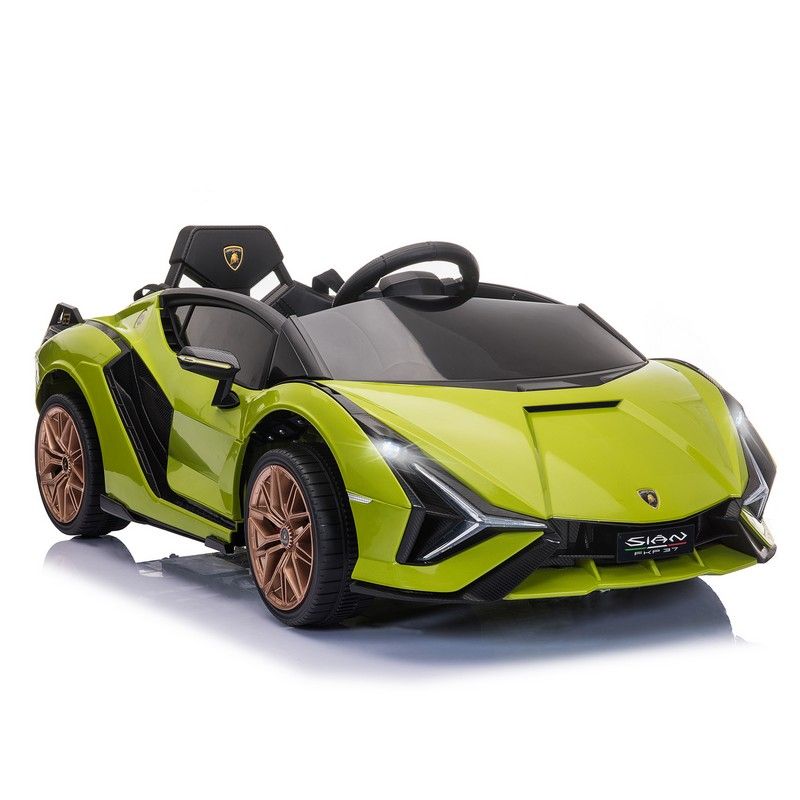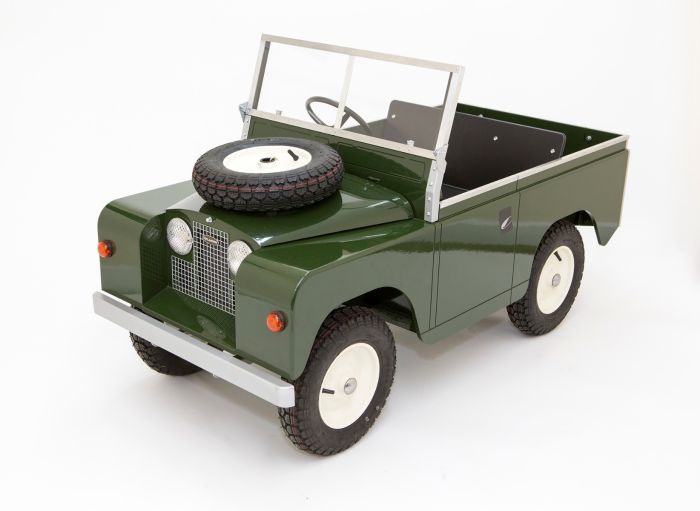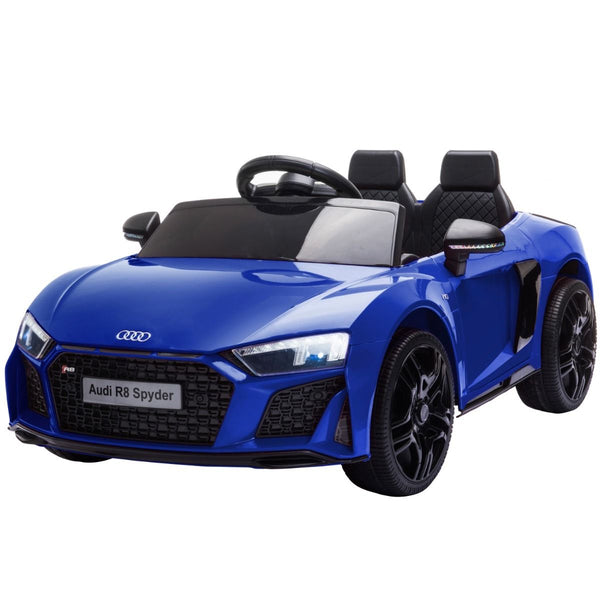New News To Picking Ride On Toys
Wiki Article
What Should I Be Aware Of About The Battery's Life And Charging Time Of An Electric Kids Ride-On Car?
Understanding the battery life and charging time of an electric ride-on kid' car is essential for the safety of your children and optimum performance. Here's everything you must be aware of - Type of battery -
The majority of electric vehicles for children can be recharged, and usually use lead-acid battery or lithium-ion battery. Lead-acid batteries are slower to charge and have less battery life.
Battery Capacity
The battery capacity is expressed in ampere hours (Ah) and watt hours (Wh). This is the length of time an electric ride-on could run on one charge. High capacity batteries allow for longer playtime without requiring recharge.
Run Time -
The time of a car's runtime is the length of time that a vehicle is able to run continuously on one battery charge. It is based on a variety of factors such as the battery, the motor along with the terrain and the weight or the rider.
Common electric ride-on vehicle run times range between 30 minutes and two hours on a single charge. Nevertheless, high-capacity lithium batteries can offer longer running times.
Charging Time
Charging time refers to the amount of time it takes for a battery to be fully recharged after it has been exhausted. Charging time can vary depending on the battery's capacity, specifications for the charger and the method of charging.
Charge times vary between 8 to 12 hours for a complete charge for electric rides-on automobiles. Certain models provide faster charging particularly those with lithium-ion batteries.
The battery's safety and lifespan can be ensured by following the manufacturer's charging recommendations. The performance of the battery and its life span could be affected negatively by either overcharging it or undercharging it.
Method of Charging
Chargers that charge electric rides are typically connected to standard electrical outlets. Some models offer rapid charging or come with an innovative charger that monitors and regulates the rate at which the battery is charged.
To ensure that the battery is not damaged or damage to electrical systems, check that the charger included with the car is compatible with the charging port.
Additional Batteries
Certain electric ride-on vehicles might permit you to purchase additional batteries or spares for a longer time of play. A supply of batteries allows you to swap out depleted batteries for fully charged ones, which reduces downtime between play sessions.
Being aware of the life span of your kids' electric ride-on car and its charging times will enable you to ensure that your child enjoys thrilling and enjoyable adventures while exploring their surroundings. Using the correct charging techniques and charging the battery on a regular basis will prolong battery life. View the top rated kids ride on cars for more examples including riding digger, car for toy, ride on toy, remote control childrens electric cars, ride a toy, childrens digger, ride on car, electric rideons, ride electric car, childs car toy and more. .

How Are Kids Car Models Made For Outdoor And Indoor Use?
Indoors or out, kids car models are made to work in various conditions and settings. They are constructed differently: Indoor Use Cars
Dimension and weight Size and Weight: Cars designed for indoor usage tend to be lighter, smaller and easier to maneuver through small spaces like living rooms, hallways, or playrooms. These vehicles are compact and compact, allowing them to effortlessly navigate around corners or narrow passages.
Low Ground Clarity Low Ground Clarity - Indoor vehicles have lower clearances to prevent them getting stuck, or getting caught, upon obstacles such as carpets, rugs, or thresholds. This allows smooth, unhindered motion across indoor surfaces.
Smooth Wheels - The wheels of indoor-use automobiles are typically made of smooth materials like rubber or plastic to give traction and grit on smooth surfaces, such as hardwood floors, laminate flooring or tiles. They are designed to minimize the sound and avoid scratching or scuffing surfaces in indoor environments.
Limited Speed - Indoor vehicles generally have a limit on speed, to allow for safe and secure driving in small areas. This helps prevent collisions or accidents caused by walls, furniture, or other indoor obstacles.
Outdoor Use Cars -
Durable Construction: Vehicles made specifically for outdoor use feature strong materials like hard plastic or steel that can withstand rough handling, outdoor elements like moisture and sunlight. They are built to withstand the harsh environment of outdoor use.
For use outdoors, vehicles with a greater ground clearance are able to navigate bumps and obstacles outside. This enables them to navigate rough surfaces like dirt, grass or gravel without getting trapped or causing damage.
Traction Tires -- The tires used on outdoor cars often have treads or patterns designed to improve grip and traction when driving on roads that are uneven or slippery. This allows for better control and stability when driving on rough terrain.
Weather Resistant - For outdoor use, cars may have components that are impervious to environmental or water damage like waterproof casings and sealed electronics. This permits the vehicle to stand up to rain, mud or puddles and still perform well.
Higher Speeds - Cars for outdoor use generally feature higher top speeds in order to accommodate wide spaces and longer distances that are common in outdoor environments. This could provide an thrilling and exciting riding experience for children that are out in the open.
With these design traits and features, parents are able to select a car for children that best fits their requirements and the setting in which they will utilize it, whether indoors or out. Parents can ensure that their child has a safe, fun, and lasting experience. Take a look at the top rated find out more for ride on toys for blog tips including toy ride, digger ride, pedal car, race car toy car, childrens electric cars, electric ride on, childrens digger, toy ride, electric ride on cars, childrens electric cars and more. .

What Factors Should I Be Thinking About Before Purchasing An Electric Kids Vehicle? What Are The Advantages And Cons Of Electric Vehicles For Children?
When you're looking to purchase an electric child's car, you should take into consideration several factors. Here are some of the most important things to consider along with information about dimensions, costs, pros and cons.
When choosing an electric child's car, you should consider the height and age of your child. Children who are younger and smaller might prefer lightweight, compact vehicles. Children older than them and those with larger bodies may require larger vehicles that can accommodate them comfortably.
Car Size and Weight
Electric cars can be found in various sizes. They vary from tiny, small vehicles to larger-scale versions of real vehicles. You should consider the weight and size of the car in relation to the child's size, strength and age. Also, you need to consider the space available to store the car and play.
Price range -
Prices for electric kids' vehicles vary significantly based on a variety of factors, including model, size, features, and design quality. Micro-sized models are generally more affordable, with prices ranging from $50 to $200, while larger-scale models can cost between $200 and $800 or more for top-quality replicas that are licensed.
Pros and Cons
Pros -
Entertainment - Electric kid's vehicles provide hours of fun and imaginative fun for kids, allowing them to experience the thrill of driving their own vehicle.
Motor Skill Development - Operating an electric vehicle can help children to develop coordination, spatial awareness, and fine motor skills.
Electric cars encourage outdoor play, physical activity and exploration.
Realistic Features: Many electronic cars for kids feature realistic features such as working lights, horns and MP3 playability. This makes for a more enjoyable playing experience.
Cons -
Costs - Electric children's cars, particularly licensed replicas of popular brands, can cost a lot.
Battery Life The power in electric vehicles is supplied by rechargeable batteries, which are able to run for a limited time and may require frequent charging.
Safety Concerns Electric vehicles are susceptible to hazards for safety including accidents, falls, and entrapment. This is especially true when the vehicle is not utilized with care and supervision.
Assembly and Maintenance Some electric vehicles need assembly upon arrival, as well as regular maintenance like cleaning, battery care, and, occasionally, repairs or replacements of parts.
Features and Accessories
Check out the available features and accessories for the electric cars of your kids, including horns that work as well as storage compartments, seatbelts as well as parental remote controls. Pick a car with features that suit your child's tastes and interests.
Ultimately, the best electric car for your child is based on factors like their size, age, and interests and budget. Be sure to read reviews, look at models and take into consideration the pros and con prior to making your final choice. See the top kids ride on cars kidscars.co.uk advice for blog examples including ride of car, kidscars, childrens electric cars, childrens electric ride on, toy car toy car, remote control childrens car, car electric ride on, toy car toy car, lambo toy car, childrens ride on and more. .
